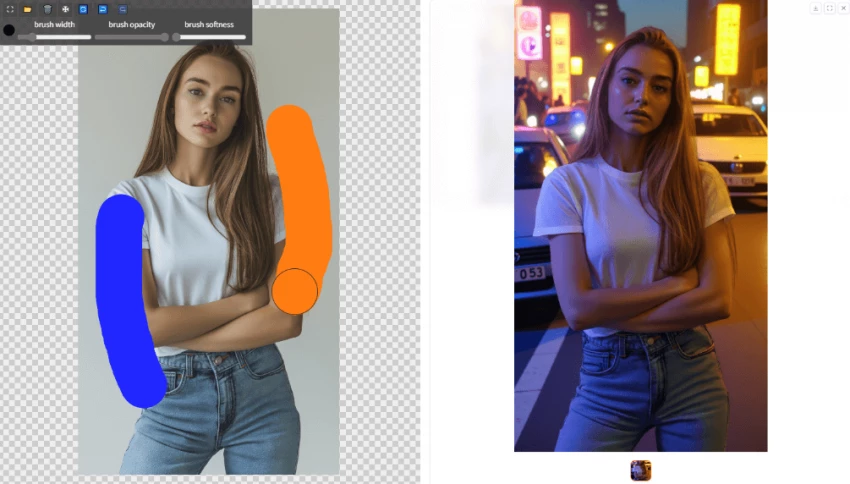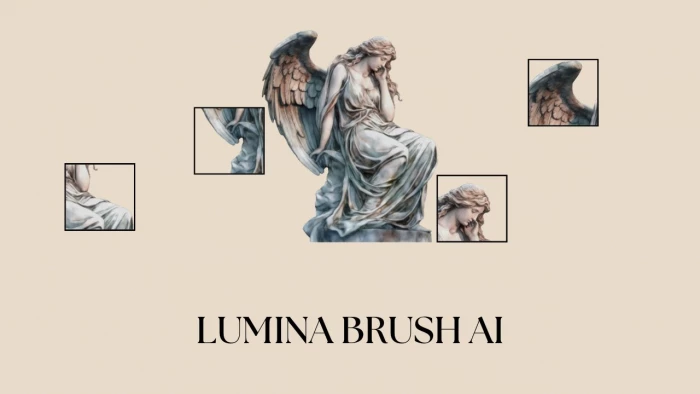AI image editing tools have evolved fast, but very few focus on lighting in a meaningful way. When I first explored LuminaBrush AI, I expected a lightweight relighting demo. Instead, I found a tool that sits halfway between a digital painting brush and an AI-powered lighting simulator.
But LuminaBrush isn’t perfect. This review covers both sides, where it genuinely helps, and where it clearly falls short, based on my experience and discussions around the LBM (Latent Bridge Matching) model behind it.
This article avoids hype and focuses on real user expectations.

LuminaBrush revolves around one specialty: AI-assisted lighting control. It uses a system called Latent Bridge Matching (LBM) that remaps lighting between images, generating realistic light falloff, highlights, and shadows.
These are its core features:
- AI-Powered Lighting
- Unique Brush Technology
- Real-Time Preview
- Advanced Layer System
- Customizable Tools
- Two-Stage Framework
- Flux Integration
- Advanced Control System
All these sound impressive, and some genuinely are, but only in specific situations.
Exploring LuminaBrush’s AI-Assisted Studio-Grade Editing Experience
LuminaBrush uses AI to simulate lighting rather than apply filters. This makes its edits feel more natural than typical “brightness & contrast” tools.
Where the Experience Feels Strong
- The brushstrokes behave like controlled beams of light
- Shadows soften realistically without blurring important details
- The layer system allows separate edits for subject, background, and highlights
- The real-time preview speeds up experimentation
- Flux framework maintains consistent illumination across layers
These strengths help digital painters, portrait editors, and concept artists.
Where the Experience Breaks Down
- The relighting algorithm struggles with low-quality or noisy images
- Shadows sometimes look painted instead of photographic
- Complex lighting setups (multiple light sources) are not handled well
- Precision masking is limited
- Not suitable for RAW-level professional workflows
LuminaBrush performs well in the “controlled creative” space but not in demanding commercial retouching.
My Practical Experience Using LuminaBrush Daily

When used repeatedly over days, certain patterns emerged.
Tasks LuminaBrush Handles Well
- Light enhancement on portraits
- Correcting mild lighting inconsistencies
- Adding mood lighting to concept art
- Adjusting highlights on AI-generated images
- Softening harsh shadows in studio shots
- Creating quick lighting variations for thumbnails
Tasks Where It Struggles
- Correcting complex product photos
- Handling high dynamic range images
- Maintaining texture on very dark skin tones
- Blending subject and background with perfect realism
- Large-scale commercial editing requiring fine detail
So, while it plays a valuable role, it cannot replace a full professional editor.
I compared LuminaBrush with tools like Photoshop, Lightroom, LuminarAI, and online AI editors.
1. Enhancing Flat AI Art
Many AI images from Midjourney/DALL·E lack depth.
LuminaBrush adds realistic directionality and glow, outperforming other tools.
2. Fixing Mild Studio Lighting Issues
It performs quick lighting repairs better than slider-based editors.
3. Adding Subtle Mood Lighting
Warm, cold, moody, or dramatic tones are easy to apply.
4. Quick Background-Light Matching
Uploading a reference background helps LuminaBrush extract its lighting signature.
5. Fine-Tuning Creative Edits
Artists can use brush-based control for stylistic effects—something most AI tools lack.
In these scenarios, LuminaBrush genuinely excels.
The Strengths and Weaknesses I Found in LuminaBrush
Key Strengths
- Clean, beginner-friendly interface
- Brush-based lighting control feels intuitive
- Fast relighting using LBM
- Real-time visual updates
- Layers allow non-destructive workflow
- Better lighting control than most online editors
- Good balance between creativity and automation
Clear Weaknesses
- Not a substitute for Photoshop or Capture One
- Cannot handle very complex professional lighting scenarios
- Limited masking and selection tools
- Results look artificial if pushed too far
- Mobile interface feels incomplete
- Requires high-quality input for best output
- No batch processing for ecommerce teams
- Minimal preset library compared to other tools
These limitations matter depending on your use case.
The Moments Where LuminaBrush AI Surprised Me Most
Not everything was predictable. A few aspects exceeded my expectations:
1. Lighting Behaves More Naturally Than Expected
The AI respects facial contours and fabric folds surprisingly well.
2. The Brush Feels More Artistic Than Digital
It mimics the movement of soft light rather than pure brightness.
3. Background Colors Influence the Subject
Atmospheric color bleeding is handled intelligently.
4. Performance Was Stable Even With Multiple Layers
No crashing or freezing, unlike many web-based editors.
5. Light Falloff Was Impressively Realistic
It gradually fades instead of abruptly cutting off.
These moments helped me understand where LuminaBrush’s real value lies.
Where LuminaBrush Fits in a Creator’s Workflow
Good Fit For
- Concept artists
- Digital illustrators
- Midjourney/AI art editors
- Hobby photographers
- E-commerce sellers with simple lighting
- Graphic designers needing mood control
- Social media creators
Not a Good Fit For
- Commercial photographers
- Professional retouchers
- Anyone working with RAW images
- Product photographers with strict color accuracy
- Editors needing flawless subject-background integration
LuminaBrush is a specialized lighting tool, not an all-in-one solution, and its usefulness depends on how much control you need.
Verdict: LuminaBrush AI Is Useful, But Not Universal
After testing LuminaBrush across different scenarios and reviewing everything available online, my conclusion is simple:
LuminaBrush AI is a capable lighting enhancement tool for creative workflows, but it is not a replacement for professional photo editing software.
You’ll like it if you need:
- quick mood lighting
- soft artistic enhancement
- simple relighting
- creative brush control
- enhancement of AI-generated art
You won’t like it if you need:
full retouching capability
- RAW-level precision
- perfect realism
- commercial-grade consistency
LuminaBrush fills a niche, and it fills it well, as long as you use it for the right type of edits.



